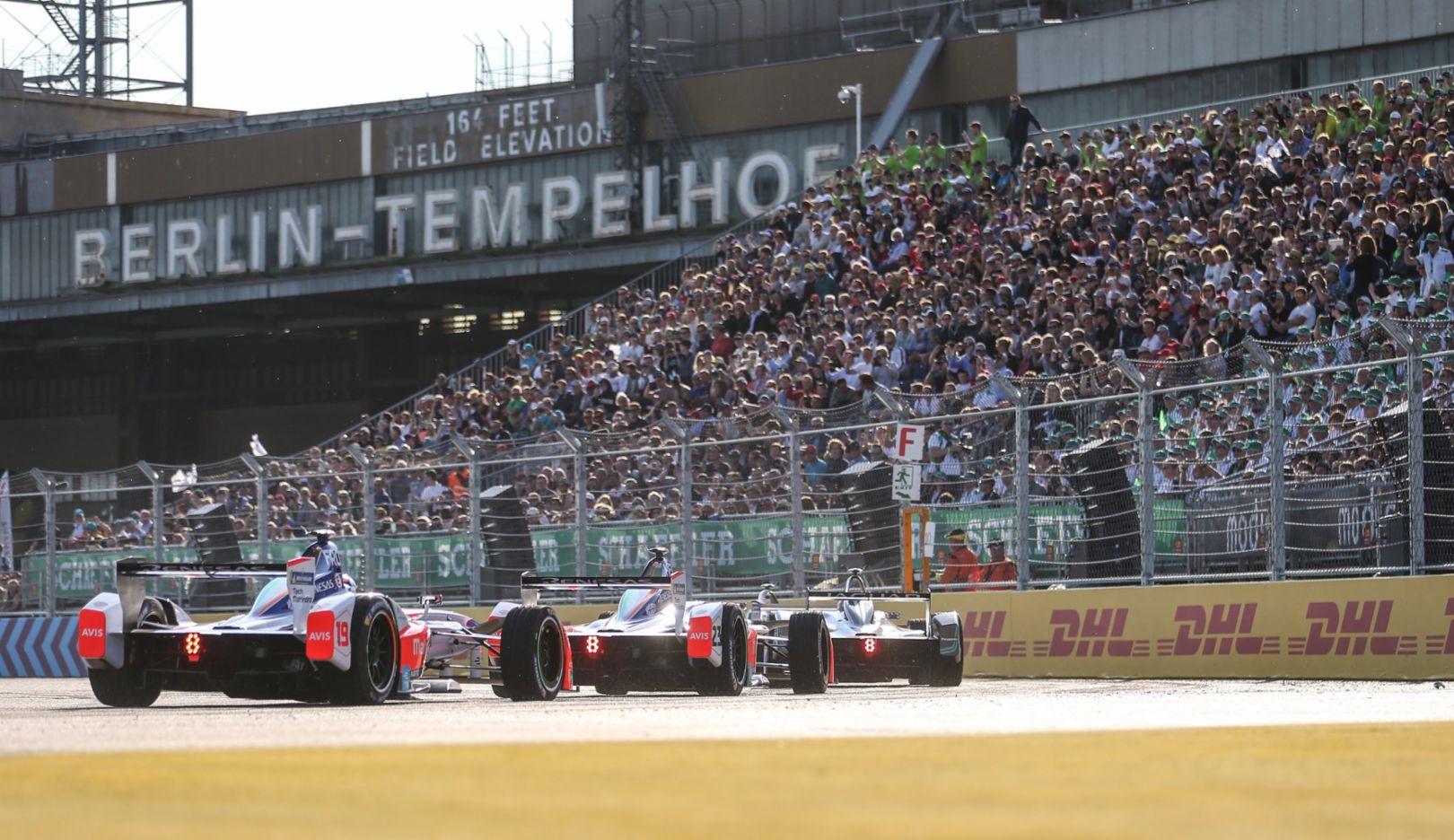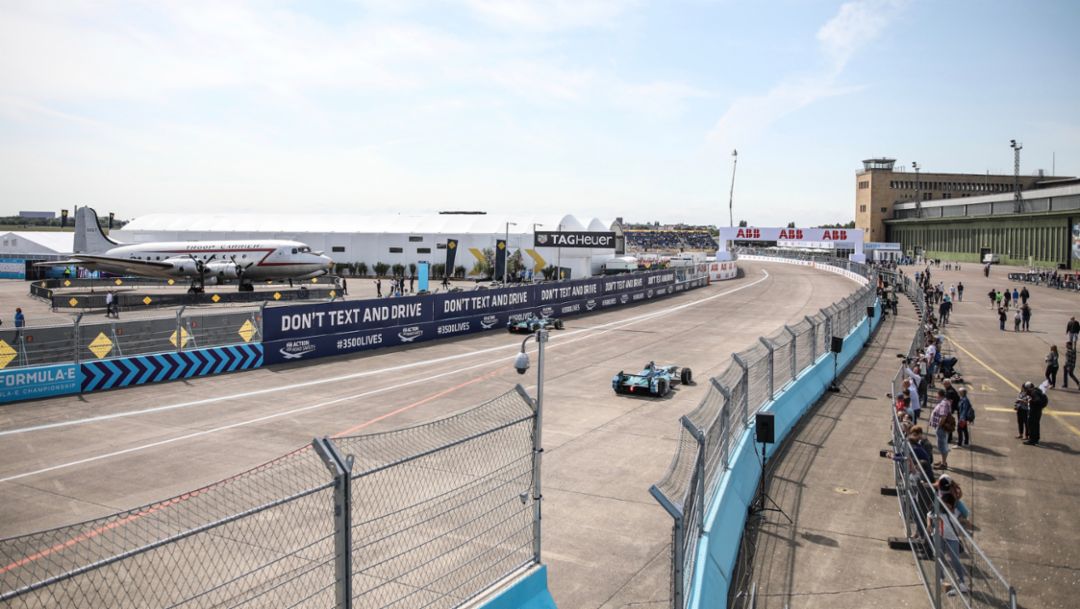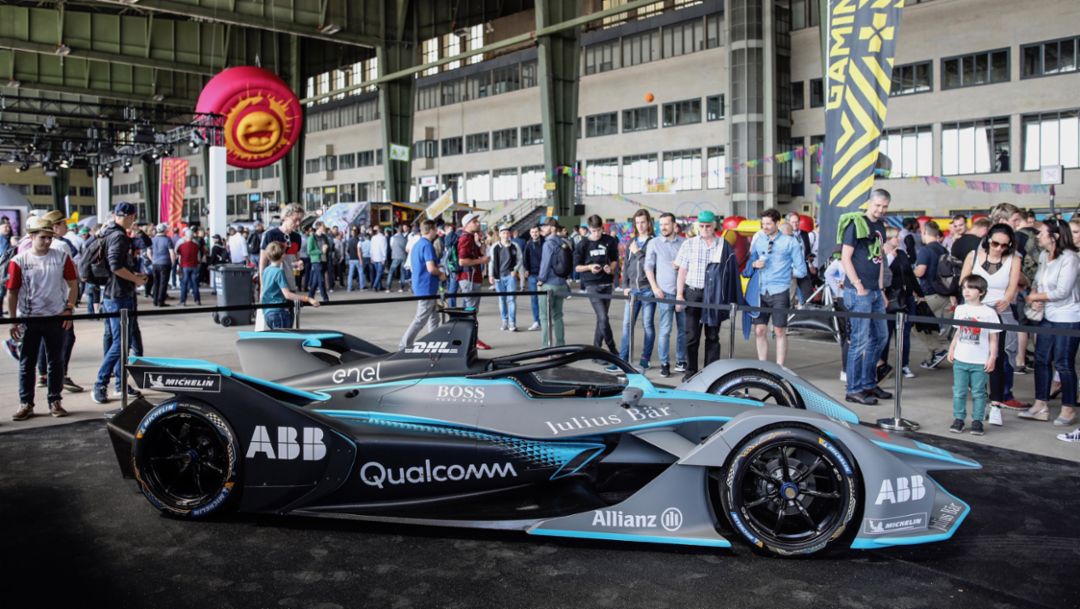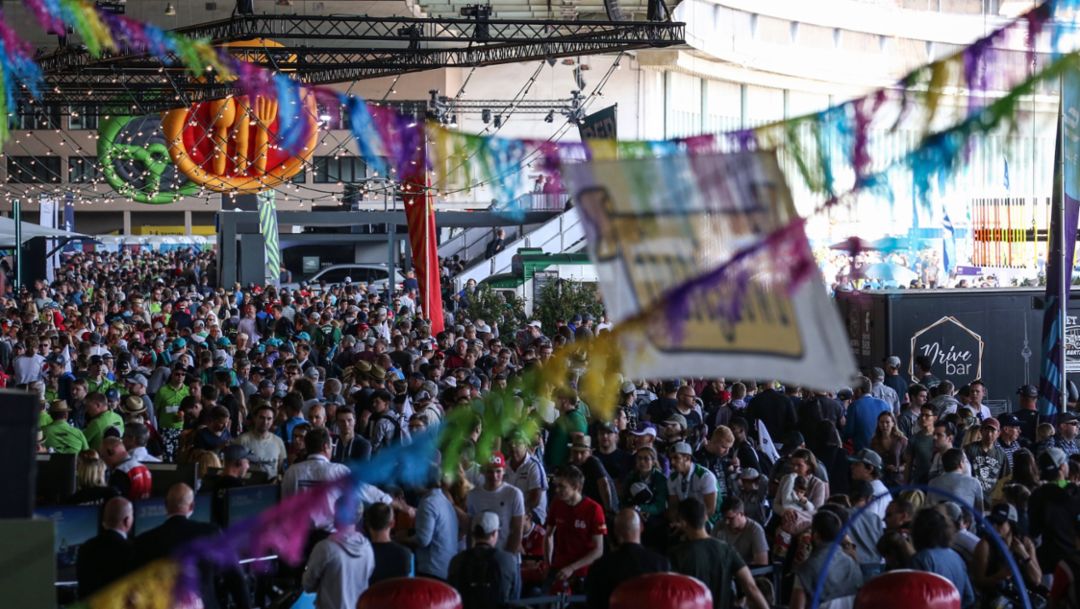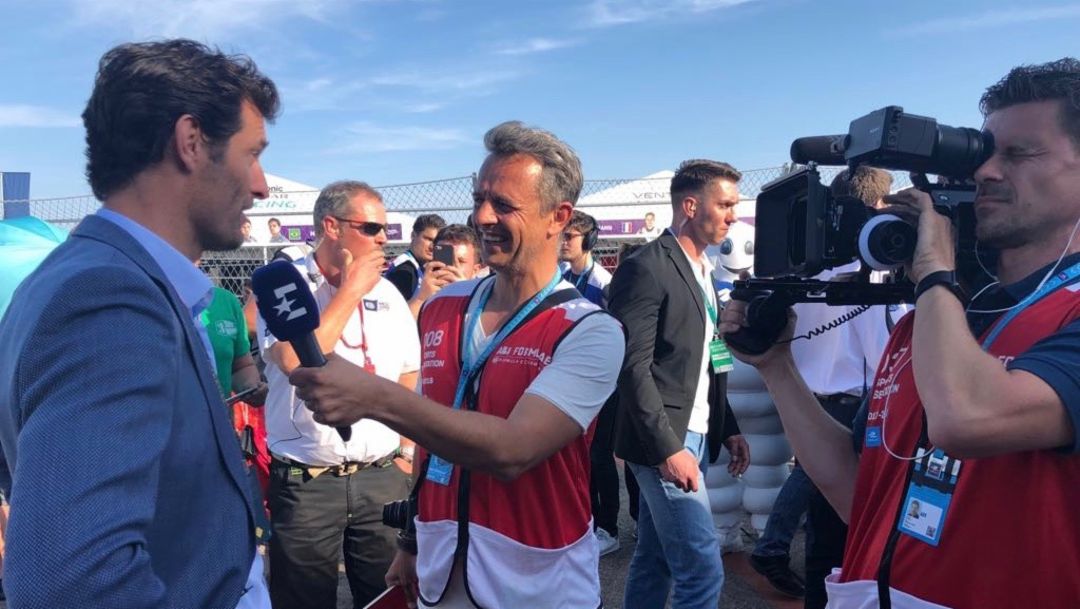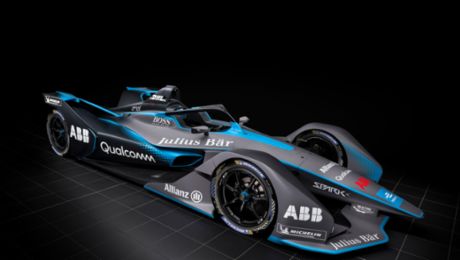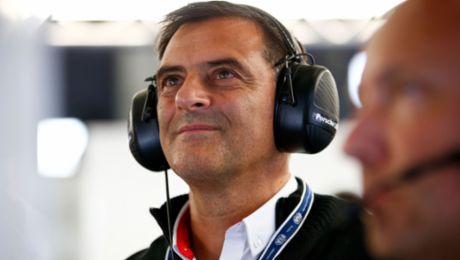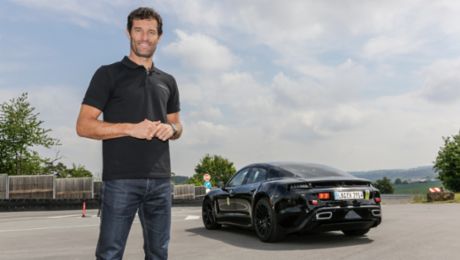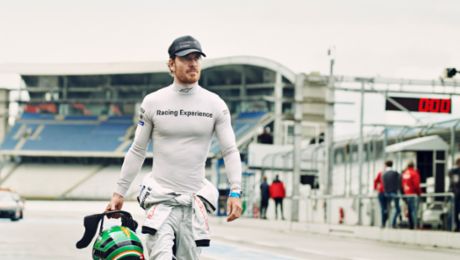In years to come, 2019 will be talked about at Porsche with the same reverence as 1948. For while the company is celebrating the 70th anniversary of Porsche sports cars this summer, many an eye in Zuffenhausen is already firmly focussed on next year and the arrival of everything ‘E’.
Appearing alongside our first all-electric road car is another brand-new venture for Porsche Motorsport: Formula E. The electric single-seater series has been evolving rapidly since its debut in 2014, and next year will see a new car and a raft of major manufacturers entering the championship with an eye to developing their emission-free tech for both road and race track. And Porsche will be firmly among them.
Getting a feel for the series
Last weekend, Round 9 of the 2018/19 ABB FIA Formula E championship arrived in Berlin, and Porsche sent in a small delegation to get a feel for the series on home turf. Among the team were Mark Webber, former LMP1 Team Principal Andreas Seidl, and Head of Group Motorsport Fritz Enzinger – heavyweights from Porsche’s Le Mans-winning line up, now tasked with steering the firm safely into these uncharted waters.
.@AussieGrit welcomes you to @FIAFormulaE racing day in Berlin. @PorscheFormelE will soon be a part of it as well. pic.twitter.com/gP7wTeEiiR
— Porsche Newsroom (@PorscheNewsroom) 19. Mai 2018
One of the driving forces behind Formula E is accessibility, locating the races in the centres of major cities around the world. For Berlin, the venue is the surprisingly central Tempelhof airport, a now decommissioned Deco site used as a location for concerts and exhibitions.
The format for Formula E is unusual at this level of motorsport. The car and battery unit are provided to the competitors, who must then develop a bespoke powertrain and the complex ancillaries such as inverter, brake-by-wire system, transmission, diff and driveshafts.
For Porsche this presents a massive challenge, as its engineers in Weissach will not receive the recently revealed Gen 2 car until January of 2019 and must have it ready for homologation by the end of Spring for a season start in December. This means that the majority of its drivetrain development and testing will have to be done on the bench, and that the window for physically trialling the components is nothing short of tiny.
The real competitive advantage
However, Andreas Seidl anticipates a fairly level performance playing field, with the real competitive advantage being found through fractions in strategy and driving style.
“The possibilities and the performance of electric cars have been a central topic at Porsche for quite a while,” he explains. “Getting the basis right is key. This competition is about achieving differences in efficiency through details.”
It is the management of energy, its conservation and careful use, that is key to winning in Formula E, and something that Seidl and his team have a strong track record with from their days with the 919 Hybrid. In Formula E, the current system allows each car a single full charge and 75 per cent of the energy generated through recuperation in a race, with drivers swapping into a second fully charged car at the mid-point – although this will no longer be necessary for the Gen 2 cars. The skill is conserving energy where possible, by slip-streaming for example, with a mind to exploiting a performance advantage at a critical moment.
The team in Weissach has already begun work on the drivetrain, using the high-voltage laboratory that was built for the LMP1 programme. “Our components are tried out on the same test benches as those of the Mission E,” Seidl explains. “In this scenario, motorsport and road car engineers work closely together. After all, we share a common interest in aspects of efficiency and in making an electric powertrain as light as possible.”
So that next phase, although looking a little stressful for Seidl and co, is well under way. The other aspect is the logistics and strategy, something the Berlin weekend is expected to shine a light on.
A race takes place on a single day
A Formula E race takes place in its entirety on a single day; meaning free practise in the morning, qualifying at lunchtime and the race in the early evening. The main event lasts less than an hour.
As the stands begin to fill you get a sense that any early scepticism about Formula E has long since evaporated. There is no ‘type’ among the crowds that mill around in the open pit lane. Men and women, girls and boys, babies in pushchairs – Formula E is a family affair, inclusive and open in a way its big brother hasn’t been for a long time.
And there is a groundswell of goodwill towards Formula E for this reason. Here is a top tier race series that encourages engagement with every level of its fan base. It all takes place in one day, potentially on your doorstep.
The sixth season, starting in 2019, will see not only Porsche entering the fray, but Mercedes-Benz, Audi and BMW too. Alongside former F1 regulars like current title leader Jean-Eric Vergne and Sebastien Buemi, the recent signing of Ferrari veteran Felipe Massa for next year has made headlines. Who else will be recruited is a hot topic, and Seidl has confirmed that Porsche will look to its existing corral of drivers to make the transition to Formula E, although the expertise of a current driver may still, he suggests, be too much to overlook.
Mark Webber speaks highly of the current field that includes former Porsche works teammate André Lotterer, highlighting the comparable challenges he faced conserving energy in the 919 Hybrid and acknowledging the mental demands and how they increase rapidly while the physical ones show little sign of abating.
As the race unfolds the unique drama of Formula E lays itself bare. The shrill cry of these cars as they charge at improbable speeds from one tight apex to the next, nose-to-tail, wheel-to-wheel, is addictive. But what makes it so special is the all-important expenditure of energy, detailed on screen for every car in ever-decreasing percentages as the laps tick by. The drivers are locked in a strategic battle that demands they dig deep into the reserves of their race craft.
Round 9 proves to be a crowd pleaser for Berlin, with Audi Sport Abt Schaeffler wrapping up a confident 1-2 and German driver Daniel Abt first to the flag ahead of Brazilian teammate Lucas Di Grassi. There is an incredible tussle for the final podium spot, with a third corner shunt gathering up much of the mid-field and championship leader Jean-Eric Vergne clawing his way through for invaluable points on the last lap.
The perfect moment
With interviews over and ceremonies complete, the crowds disperse into the warm Berlin streets and the expanse of Tempelhof steadily empties. The compelling energy of this buzzing, bustling place, like the cars at the final flag, is suddenly drained. Packing an entire race weekend into a single, frenetic day is exhausting for crews and spectators alike, but as the collective pulse slows and our little reconnaissance mission comes to close, the team leaves with a spring in its step.
Porsche is entering Formula E at what feels like the perfect moment, and right now we can’t wait to get started.
